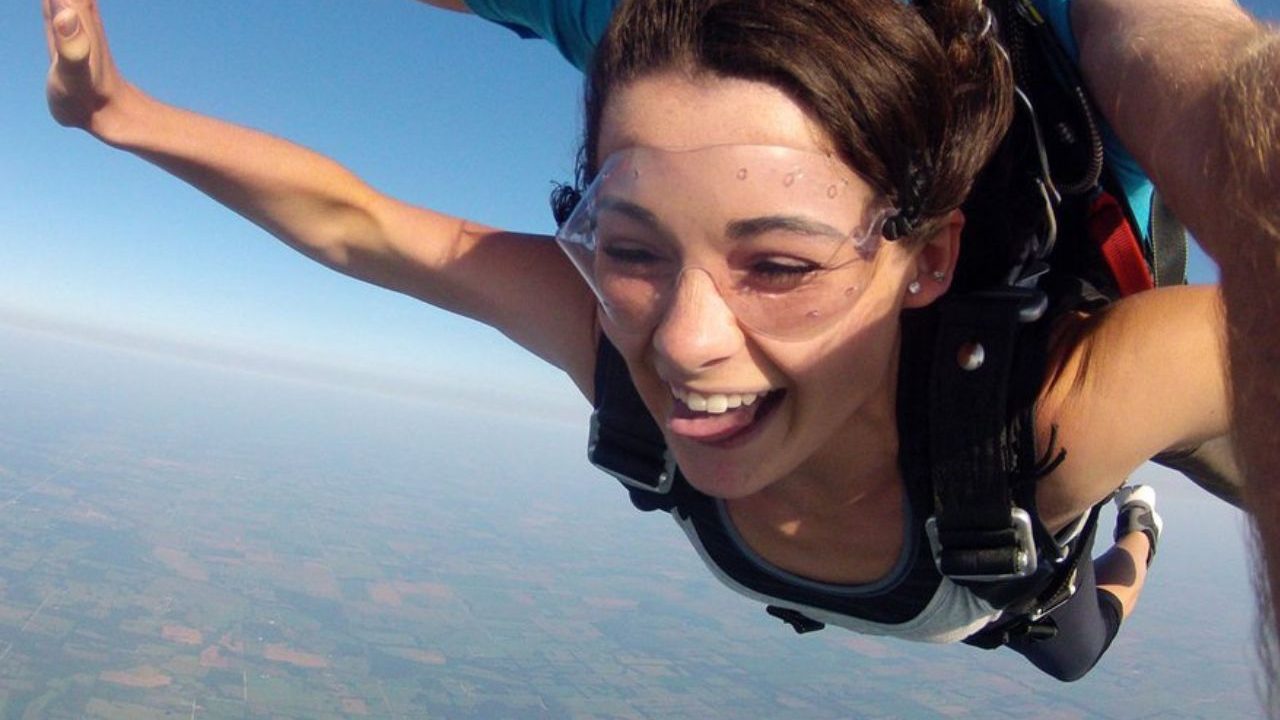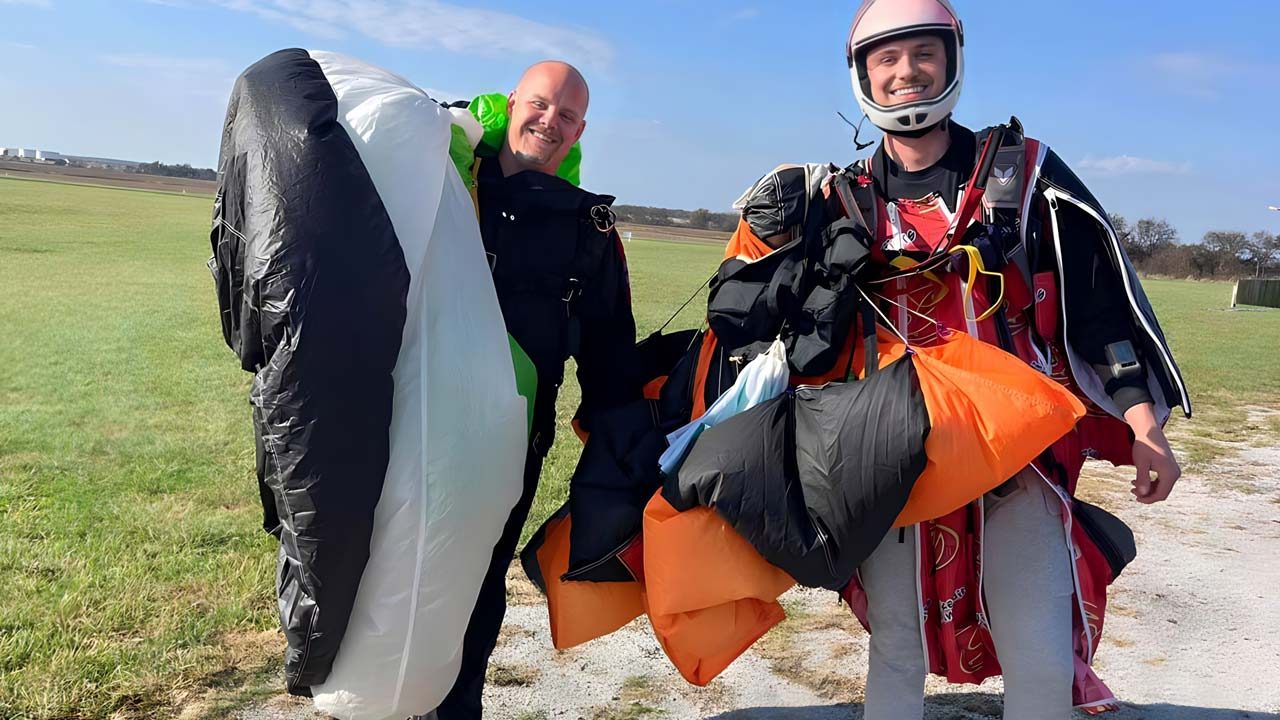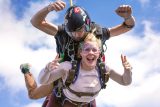What Happens After the First Skydive
Skydiving
Posted by: OZARKS Skydive Center
6 years ago
We know how you’re feeling because we’ve all felt it. You have the itch. There’s a constant current running through you. All you can think about is how INCREDIBLE, how ALIVE, how AMAZING you felt during and after your tandem skydiving experience, and you’re hungry for more. We get it; we’ve been there. Here’s a guide to what’s waiting for you in the sky:

1. Get Licensed & Fly Solo
Jumping on your own without a tandem instructor is within reach. The first step is to earn your skydiving license by completing an Integrated Student Program. You will gradually increase your skills as you progress through ground work followed by several jumps, each designed to help you master specific sky skills. The program is super fun and crazy empowering; you won’t feel overwhelmed. Learning to skydive is like learning to drive a car. At first, it’s intimidating, but the more you do it the more comfortable you become.
2. Jump with Pals
As you’ll learn immediately, the skydiving community is somewhere between a family and a fraternity. (In fact, there are skydiving fraternities that welcome men and women.) The bond between skydivers is unique. You’ve seen the world from a totally different angle, and you speak in a language those who have yet to experience life from 10,000 feet up and at 120 miles per hour just don’t understand. With your solo skydiving license complete, you are free to jump with your pals at your local dropzone or at any skydiving center across the country and the world. You’re likely to want to jump every weekend, and guess what? So are they.

3. Learn New Disciplines
Belly-to-the-earth skydiving is amazing, but there’s way more to the sport than jumping out of the plane and deploying your chute. Here are just some of the disciplines your new peers are obsessed over:
Formation Skydiving (FS)
FS is where choreography meets general badassery – picture synchronized swimming in the sky.. First practiced on the ground and then executed in the air, FS challenges multiple skydivers (4+) to temporarily attach to each other by holding onto limbs or grippers on jumpsuits whilst in freefall. The goal? Geometry like you’ve never imagined. Check it out:
Vertical Formation Skydiving (VFS)
A subcategory of FS, Vertical Formation Skydiving takes the principle of FS and turns it on its head – literally. VFS jumpers make patterns in the sky while their feet or head is pointing straight down. For real, though:
Wingsuit Flying
Also known as a birdman, flying squirrel or bat suit, the wingsuit offers a crazy-cool upgrade to a standard jumpsuit through the addition of fabric under the arms and between the legs. Adding a ton of surface area, a wingsuit offers you extended flight time and the opportunity to experiment with forward momentum and fall rate:
Basically super-hero level, wingsuit flying requires skydivers to have at least 200 jumps before they can begin wingsuit training.
Canopy Relative Work (CRW)
An awe-inspiring feat and breathtaking spectacle from the ground, CRW or CReW – unlike other formation work – takes place under canopy. With surgical precision, skydivers dock to one another’s parachutes and form beautiful, colorful patterns that leave even the most seasoned jumpers gobsmacked:
Canopy Piloting (Swooping)
Skydiving blends with watersports in this high-velocity individual event beloved by spectators. Most commonly called swooping, super-experienced skydivers come in “hot” and make their landing in water – often playing with near-ground loop-de-loops, running on water and skiing on tiptoe before sliding into home:
4. Become an Instructor
The ultimate and most fulfilling role of all is becoming a skydiving instructor. After 500 jumps, 3 hours of freefall and membership from the US Parachute Association, you’re equipped to start inspiring a whole new crop of adventure seekers. You may not be sure at this juncture if coaching is in your future, but go ahead and get into the habit of recording your jumps – the exit altitude, duration of freefall, jump type, distance from the landing site, the equipment in play, who you jumped with, and of course, date and location. Sometimes it take a little time to comprehend just how hard you’ve been bitten by the skydiving bug!
Skydiving doesn’t have to be a once-in-a-lifetime experience. While skydiving may seem intimidating, it’s an accessible sport like any other. With practice and perseverance, there are many ways to follow your new passion, all the while meeting a ton of like-minded people along the way. Blue skies!



